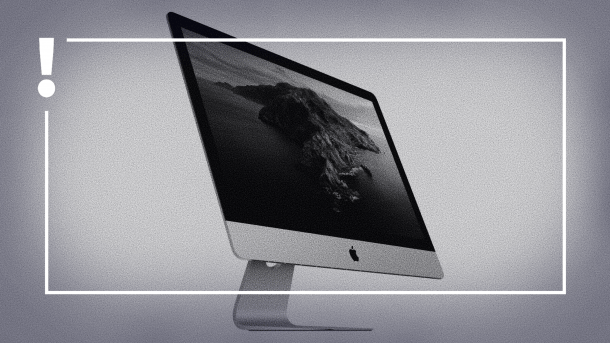Opinion: When Apple retires Macs too early
Apple computers are normally known for their longevity. The problem is that at an early stage, software updates are no longer available. That has to change.

Old Mac, here an iMac 5K: Holds, but only insecure thanks to a lack of updates.
(Image: Apple)
Mac & i issue 1/2025, which will be published on January 31, provides suggestions on how to install the latest operating systems on old Macs. Johannes Schuster has taken this as an opportunity to take a critical look at Apple's update policy. Users of heise+ are already reading the articles, the links can be found in the box.
It's nice that Macs usually have a long life and are also very popular second-hand –, as the high prices on eBay impressively show. What I don't find so nice is that Apple is terminating its support for old Macs unnecessarily early. In last year's environmental report, Cupertino boasted that it was still providing the iPhone XS from 2018 with the update to the then current iOS 17.
Apple is therefore exceeding the EU directive, which requires five-year updates for smartphones.
Videos by heise
However, there is no regulation for computers and, promptly, the sustainability of Macs has often not gone that far recently: a MacBook Air from 2019 no longer receives a Sequoia – after just five years. Although the last two system versions usually receive important patches, only the latest macOS gets full security.
Anyone using Safari on old Macs often encounters websites that cannot be opened or certificates that cannot be updated and has to switch to Firefox or Chrome. Why do they still get updates and Apple can't?
Projects such as the OpenCore Legacy Patcher show that there is another way. In the articles from page 8 onwards, we show you how to install the latest macOS or Linux on an old Mac. Many old Macs are powerful enough for simple applications such as Office or surfing the web.
Why is Apple rigorously cutting support for the entire system instead of just removing the performance-hungry new functions? Every fall, when the new macOS is released, owners of old Macs have to worry that their well-running old-timer will end up on the list of unsupported devices.
To me, this artificial phase-out seems like planned obsolescence. I don't want to have to buy a new computer just because the manufacturer wants me to, I want to be able to decide for myself when the end comes.
Empfohlener redaktioneller Inhalt
Mit Ihrer Zustimmung wird hier ein externer Preisvergleich (heise Preisvergleich) geladen.
Ich bin damit einverstanden, dass mir externe Inhalte angezeigt werden. Damit können personenbezogene Daten an Drittplattformen (heise Preisvergleich) übermittelt werden. Mehr dazu in unserer Datenschutzerklärung.
(mki)